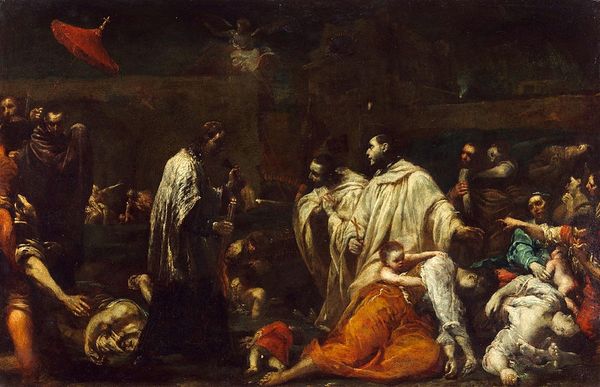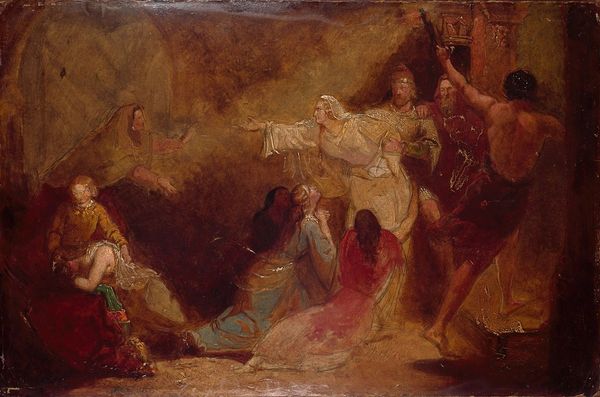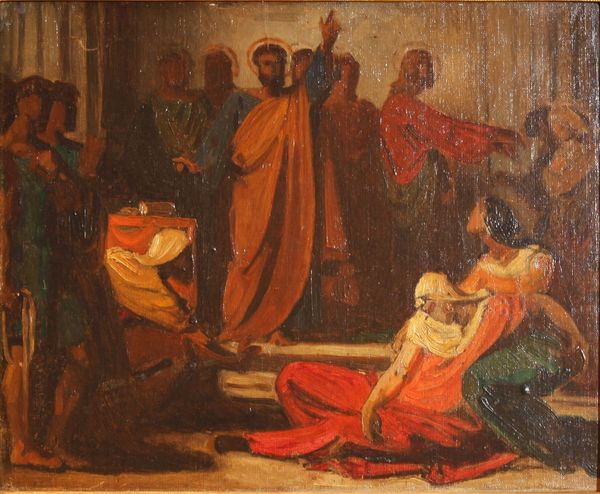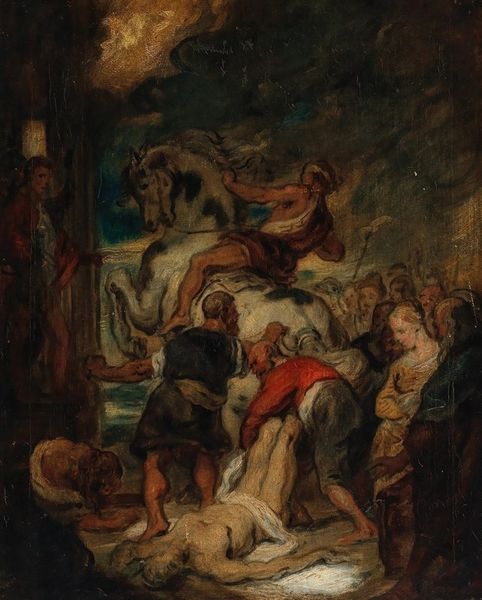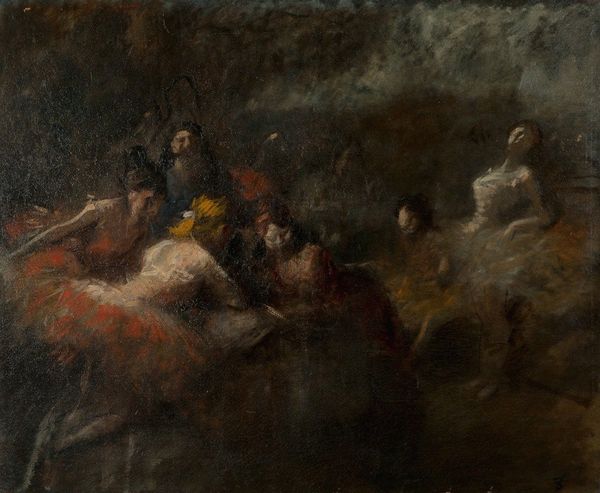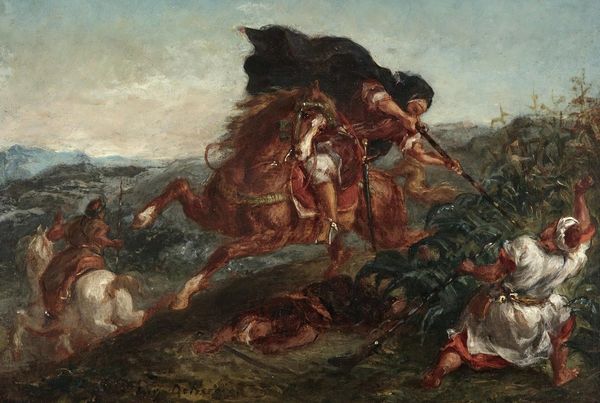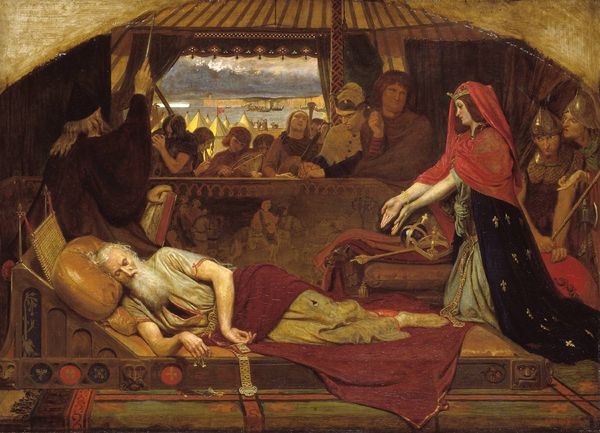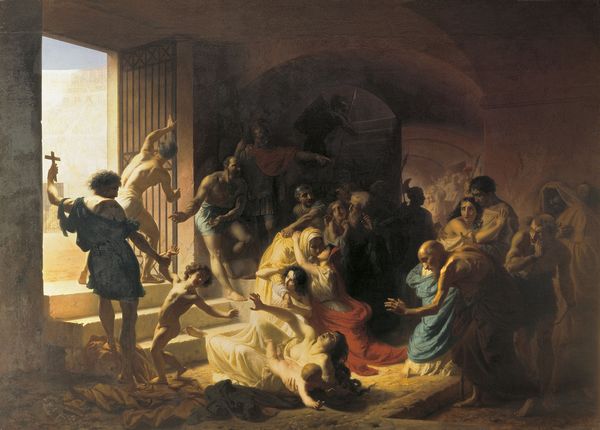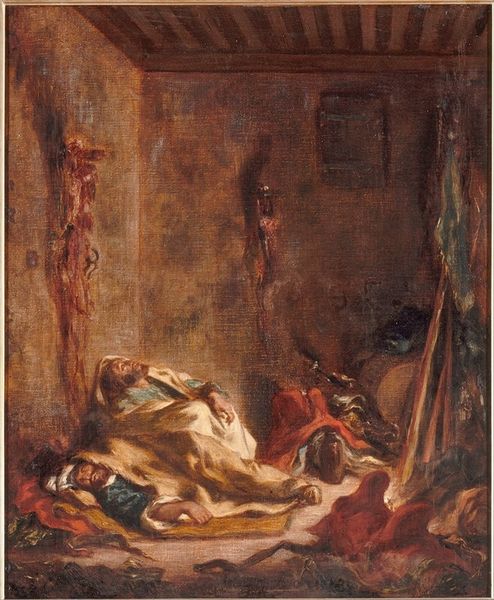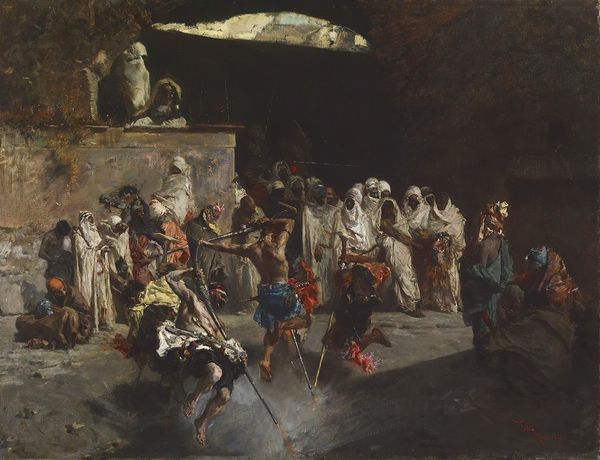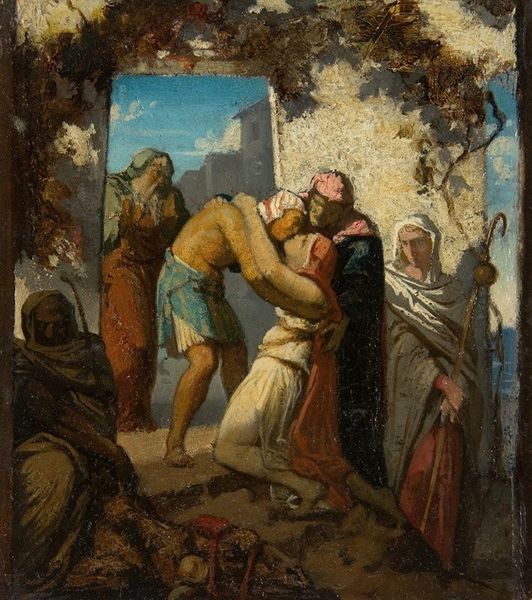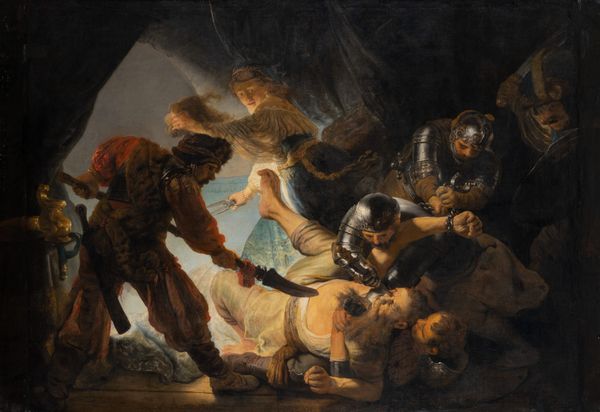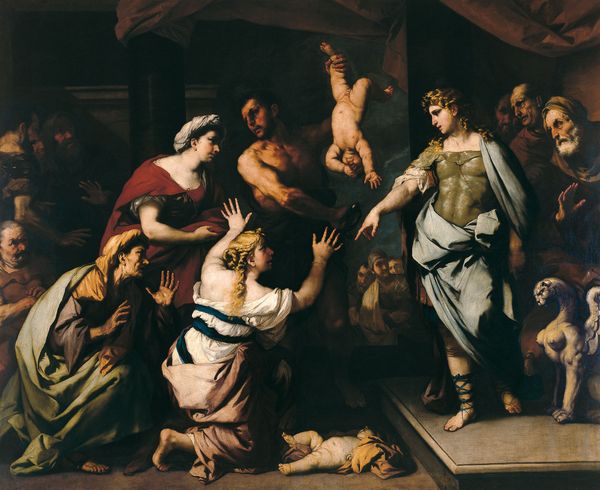
painting, oil-paint
#
narrative-art
#
painting
#
oil-paint
#
figuration
#
oil painting
#
romanticism
#
mythology
#
history-painting
Copyright: Public Domain: Artvee
Anne-Louis Girodet rendered this oil on canvas, ‘The Death of Pyrrhus’, to depict a scene from ancient history, reflecting the Neoclassical style popular in France at the turn of the 19th century. It captures the moment Pyrrhus, King of Epirus, is killed in Argos. The image creates meaning through classical architectural backdrops, dramatic lighting, and the heroic, muscular figures recalling ancient statuary. Girodet’s painting engages with the social and political ideals of the era. In post-revolutionary France, there was a growing interest in antiquity, especially republican Rome, for models of civic virtue and governance. The painting can be interpreted as a commentary on leadership, power, and the consequences of ambition, issues pertinent to the tumultuous political landscape of the time. To fully understand this painting, scholars research the classical texts that inspired it, the artistic conventions of Neoclassicism, and the political climate of early 19th-century France. It's through this multifaceted investigation that we can appreciate the social and institutional contexts that shape the artwork's meaning.
Comments
No comments
Be the first to comment and join the conversation on the ultimate creative platform.
